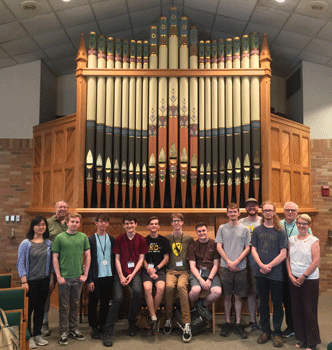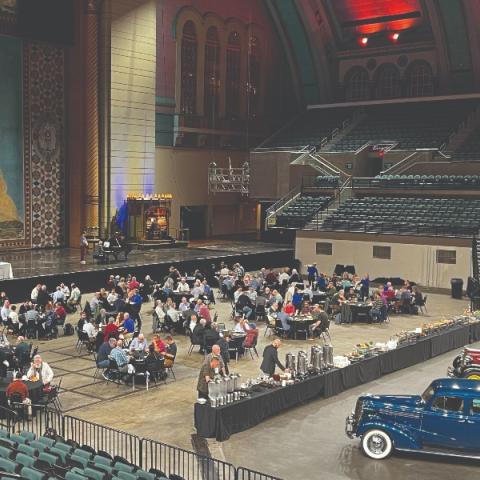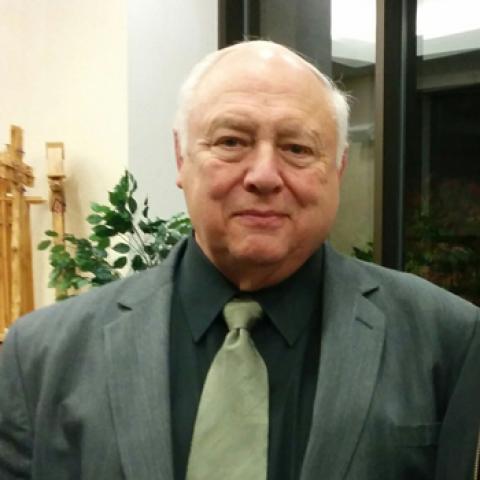
The American Guild of Organists’ Pipe Organ Encounter Tech was held July 21–27 in the Chicago metropolitan area, sponsored by Berghaus Pipe Organ Builders, Inc., of Bellwood, Illinois, and the Chicago Chapter AGO. Ten students learned about organs and organbuilding with seminars and workshops at the Berghaus shop.
The group experienced several field trips to visit organs, including a full day in Valparaiso, Indiana. There, students visited eight pipe organs at Valparaiso University, three at St. Paul Catholic Church, and one at St. Andrew Episcopal Church. The day ended with dinner at Beggar’s Pizza in Lansing, Illinois, where Glenn Tallar performed on the restaurant’s theatre organ. For information: www.agohq.org/education/poe/.




